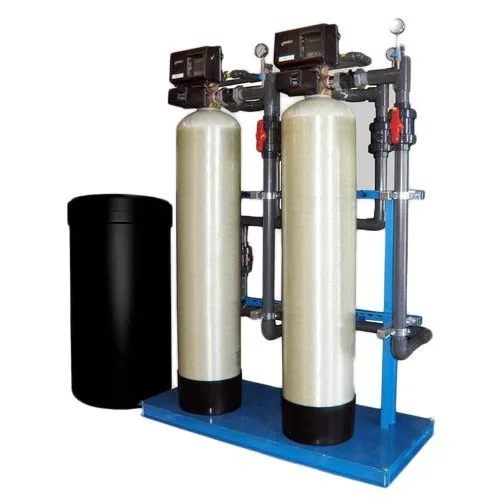
Our Product
FRP SOFTNER PLANT
An FRP Softener Plant (Fiber Reinforced Plastic Softener Plant) is a water treatment system designed to remove hardness from water by using ion exchange technology. This system is widely used in industrial and commercial settings to soften hard water, which contains high levels of calcium and magnesium ions. Softened water is essential for various processes, such as in boilers, cooling towers, and manufacturing processes, where hard water can cause scaling and damage to equipment.
Key Components of an FRP Softener Plant:
-
FRP Vessel: The main body of the softener plant is made of Fiber Reinforced Plastic (FRP), a strong, corrosion-resistant material. The vessel houses the ion-exchange resin, which is responsible for softening the water.
-
Ion Exchange Resin: The resin beads inside the FRP vessel are used to remove calcium (Ca²âº) and magnesium (Mg²âº) ions from the water. These ions are replaced by sodium (Naâº) ions, thus softening the water.
-
Control Valve: The control valve regulates the flow of water through the softener system, allowing for proper filtration and regeneration cycles. It ensures the resin is regenerated after it has been exhausted.
-
Brine Tank: This tank holds a salt solution (usually sodium chloride) used to regenerate the ion-exchange resin after it has been saturated with calcium and magnesium ions. The brine solution flushes out the hardness ions and replenishes the resin with sodium ions.
-
Flow Meters and Pressure Gauges: These are used to monitor the flow and pressure of water within the system, ensuring optimal performance and detecting potential issues like blockages or pressure drops.
-
Regeneration System: This system cleans and rejuvenates the ion-exchange resin after a certain period of use. It involves flushing the resin with a brine solution to remove accumulated hardness ions and restore the resin’s ability to soften water.
Working Principle:
- Water Flow: Hard water enters the FRP softener plant through the inlet valve and is directed into the FRP vessel containing ion-exchange resin.
- Ion Exchange Process: As the hard water passes through the resin, calcium (Ca²âº) and magnesium (Mg²âº) ions are exchanged with sodium (Naâº) ions from the resin, thereby softening the water.
- Regeneration: Once the resin becomes saturated with hardness ions, the system initiates a regeneration cycle, during which a concentrated brine solution is passed through the resin bed. This displaces the hardness ions, and the resin is recharged with sodium ions.
- Discharge: The softened water is then discharged from the outlet of the softener, ready for use in various applications.
Applications of FRP Softener Plants:
- Boiler Systems: To prevent scale formation in boilers, which can reduce efficiency and increase maintenance costs.
- Cooling Towers: Softened water is used in cooling towers to prevent scaling in heat exchangers and other components.
- Textile Industry: To improve the quality of water used in dyeing, washing, and finishing processes.
- Pharmaceutical Industry: To ensure the purity of water used in drug manufacturing and testing.
- Food and Beverage Industry: To maintain the quality of water used in processing and production.
Advantages:
- Corrosion Resistance: The FRP construction ensures durability and resistance to corrosion, even in harsh environments.
- Cost-Effective: Compared to metal-based softeners, FRP softener plants are lightweight and more affordable.
- High Performance: The system efficiently removes hardness, ensuring consistent water quality.
- Low Maintenance: Regular maintenance primarily involves checking the salt levels and monitoring the resin regeneration process.
Conclusion:
An FRP Softener Plant is a reliable and efficient solution for softening hard water. It plays a crucial role in industries that require high-quality water to prevent scaling and extend the life of equipment. Its corrosion-resistant FRP construction, along with easy operation and maintenance, makes it a preferred choice for many industrial applications.

